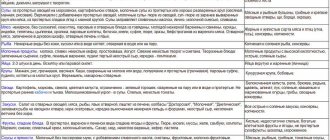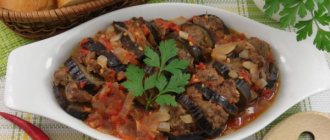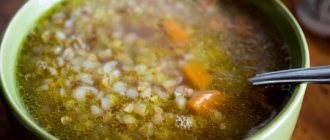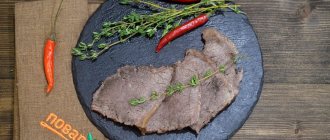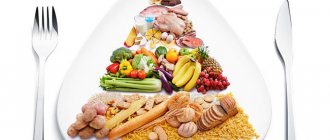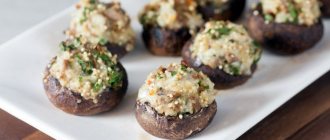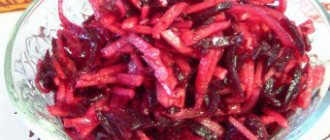Following a dietary menu for people with stomach ulcers is an integral part of therapy. Without proper nutrition, the effect of treatment with medicines and pills alone will be minimal. The stomach is the first organ where food enters unchanged for initial digestion, and if it is not as gentle as possible, inflammatory processes will progress intensively. Of course, a dose of medicine will help to temporarily calm the outbreak, but it will not be possible to completely eliminate it without a proper diet.
Why do you need a therapeutic diet for stomach ulcers?
Since antibiotics fight bacteria, why follow a diet when treating stomach ulcers? This is necessary because antibiotics can kill not only harmful bacteria, but also beneficial bacteria.
Therefore, to maintain the body in the process of fighting the disease, it is recommended to adhere to a certain diet. In addition, some products contain substances that can fight Helicobacter Pylori no worse than medications.
Such foods are included in any diet for ulcers.
By the way, treating an ulcer at home is very dangerous. Without competent drug therapy, an attack of the disease will be difficult to suppress, so we strongly recommend that you visit a doctor.
“Table 1” - diet for the treatment of ulcers
“Table 1” is a medical diet that is part of the complex treatment of the disease and helps to increase the effectiveness of pharmacological treatment. The main goal of the diet is to reduce the load on the damaged area of the stomach. A properly prescribed diet will speed up the process of regeneration and healing of damaged areas of the mucous membrane, reduce inflammation and improve gastric secretion.
What foods can you eat if you are sick?
Peptic ulcer disease causes destructive processes that affect the proper functioning of other organs of the gastrointestinal tract. A chronic disease occurs with periods of exacerbations that occur as a result of stress, the use of irritating substances or foods, as well as disturbances in eating habits.
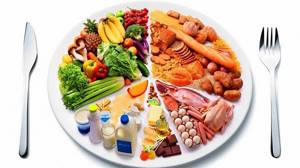
To ensure a speedy recovery, the patient must adhere to the principles of dietary nutrition, which includes the following dishes:
- slimy soups with white meat, vegetables, cereals and milk;
- oven-dried white crackers, dry biscuits, dietary biscuits;
- dishes with dietary meat of turkey, rabbit, chicken, chopped and steamed in the form of puree, meatballs and soufflé;
- steamed omelette or eggs boiled until half cooked;
- tender cottage cheese casseroles with 5 grams of butter;
- boiled, disassembled, lean sea fish;
- fresh dairy products with reduced fat content;
- sweet fruits of soft consistency (banana, oven-baked apples and pears, berries);
- boiled porridge with 5 grams of olive oil, homemade noodles, pasta;
- stewed, boiled, steamed vegetables (carrots, pumpkin, beets, zucchini, potatoes);
- jelly, mousse, milk and fruit jelly, honey, marmalade, pudding;
- butter and vegetable oil;
- Drinks allowed include still water, low concentration tea, milk, medicinal herbal decoctions, compotes, and infusion.
Salt intake should be reduced to a teaspoon per day or completely eliminated.
Nutritional Features
Example menu for an open ulcer
After an ulcer of this type has been discovered, you should not eat anything for the first 1-2 days. Drink teas made from medicinal herbs, flax seeds, or carrot juice diluted half with water. Next, the doctor must give his approval for the diet. Nutrition number 1a is most often used, since it is very light and does not injure the stomach. Follow the diet for 10 to 12 days until the ulcer heals. Sample menu for the day:
- Breakfast - grated unsalted oatmeal with water, chamomile tea.
- Snack - low-fat yogurt, crackers (without seasonings, unfried).
- Afternoon snack - steamed fish meatball (cutlet), boiled rice, linden flower tea.
- Dinner - one or two soft-boiled eggs, jelly, crackers.
- Before bed - a cup of warm milk.
Diet for acute stomach ulcers
During this period, the symptoms of the ulcer intensify - the person experiences severe stomach pain. But despite this, you need to eat. Therefore, all food is ground into porridge and consumed in this form. Dishes should be served warm and unsalted. Sample menu for the day:
- Breakfast - steamed egg white omelette, oatmeal jelly.
- Snack: yogurt.
- Lunch - barley porridge soup, carrot and potato puree, a small piece of chicken breast, tea with milk.
- Afternoon snack - soup with rice and milk.
- Dinner - oatmeal with butter, chamomile tea.
- Before bed - tea with milk.
For bleeding and perforated ulcers
For a bleeding ulcer, a very strict diet is used. You should eat liquid food - soups, porridge diluted with water or milk (oatmeal, buckwheat), steamed omelette or boiled protein, teas, herbal infusions, fresh carrots and potatoes, half diluted with water. It is important that the feeding does not result in new bleeding and that the wound heals successfully. A perforated stomach ulcer can only be treated with surgery. Before and after the intervention, the intake of any food is excluded, nutrients are introduced into the body intravenously.
After operation
After removal of a gastric ulcer, the diet should be prepared separately for each patient. If the patient’s recovery process proceeds quickly and without complications, he is prescribed a normal diet, as for all patients with peptic ulcer disease. But there are also general rules of nutrition in the postoperative period:
- Day 1 - the patient is prohibited from eating on the first day.
- Day 2 - in the absence of complications - half a glass of liquid (drink with teaspoons).
- Day 3 - drink 2 glasses of liquid - water, tea, diluted broth (room temperature).
- Day 4 - in addition to liquid: eggs, jelly, oatmeal soup. From 10 to 12 meals, 4-5 glasses of food.
- Day 5 - you can drink an unlimited amount of liquid, eat semolina porridge, cottage cheese and grated dietary soup, boiled meat, in the form of soufflé, meatballs, and cutlets ground through a sieve.
What should you eat if you have a stomach ulcer?
List of foods that will help you speed up your recovery:
- Cauliflower, White cabbage.
- Radish.
- Apples.
- Blueberries, raspberries, blackberries, strawberries.
- Cherry.
- Bell pepper.
- Carrot.
- Leafy greens.
- Honey.
- Garlic.
- Licorice, turmeric.
- Foods rich in probiotics, such as yogurt, kefir.
A diet for stomach ulcers prohibits the presence of the following products on the menu:
- hard-boiled eggs;
- sharp, sour and difficult to digest vegetables that cause fermentation in the intestines;
- bran and whole grain bread, baked goods;
- sour berries and citrus fruits;
- mushrooms in any form (in soups, main courses);
- hard-to-digest cereals (barley, millet) and legumes;
- fatty concentrated broths, tomato soup, borscht;
- marinades, sour, spicy foods;
- canned, pickled and fried foods;
- dishes with the addition of garlic and onions;
- products with thickeners, dyes and stabilizers;
- sausages, offal, fatty fish, sausages, ham, lard, red meat;
- seeds and nuts;
- cocoa, ice cream, chips, confectionery;
- kvass, sour juice, tomato juice, coffee, carbonated and alcohol-containing drinks.
Vomiting blood
The formation of ulcers on the gastric mucosa is often accompanied by vomiting. If during it a person feels acute pain in the abdomen and notices particles of blood in the vomit, then this may be a sure sign of the active development of a stomach ulcer. This symptom should not be missed. Sometimes with an ulcer, the vomit looks like a viscous, brown-brown thick substance. This is a sign that the integrity of the blood vessels in the stomach is compromised and urgent treatment is necessary. Vomiting blood indicates wounds on the mucous membrane.
Types of diets and diets according to them
There are pre-prepared and detailed diets that are universally used during stomach ulcers for many patients. There are several of them, used at different periods of the disease. For example, diet No. 1a is prescribed during an acute period of a stomach ulcer, accompanied by severe pain, for up to 20 days, after which they gradually switch to an expanded, more simplified diet No. 1. During the period of remission, diet table No. 1 or No. 5 is used, to which less strict foods are added. The regimen prescribed by treatment with one or another diet should be strictly followed.
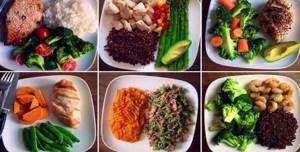
Menu 1
The diet for stomach ulcers was developed by Mikhail Pevzner, an outstanding nutritionist of the Soviet Union. It has been proven for more than one generation that this diet is very effective in treating stomach ulcers. It is prescribed during a period of regressive exacerbation of a stomach ulcer, or during recovery and is used for five months. Grinded dishes are used for food that do not irritate and do not have mechanical effects on the stomach (boiled, steamed).
Meals occur every two to three hours, and the ratio of carbohydrates-proteins-fat is maintained in proportions of 5:1:1. The diet menu for ulcers includes: Stale baked goods, unleavened biscuits, lean boiled meat, egg whites. Milk soup, vegetable (without cabbage), seasoned with butter, vegetable or olive oil. Boiled or steamed low-fat sea fish without skin and bones is allowed.
For garnish - boiled porridge and puree with vegetables, in the form of puddings, noodles. Milk, cottage cheese, cottage cheese casseroles, sour cream. Instead of dessert, for stomach ulcers, use honey, non-sour jam, and a little marshmallow. It is good to bake fruits, such as apples or pears. The diet includes weak juices (half and half with water), tea diluted with milk, and still water at room temperature.
Menu 1a
Diet 1a is based on the basis of 1, but differs in a more strict abstinence and approach to nutrition, because... used during intense gastric ulcers, accompanied by acute pain and bed rest. All products that cause the secretion of gastric juice and irritate the gastric mucosa are completely excluded here. The number of meals per day with such a diet is reduced to eight meals and the ratio of proteins-fat-carbohydrates is 2:0.8:0.8.
The daily consumed amount of calories should not exceed 2000. With such a diet for stomach ulcers, bread and vegetable dishes are completely removed from the menu. Non-acidic fruit and berry jellies, soufflés, juices, jelly, and honey are suitable for the diet. The basis is widely used in all kinds of puree soups, mucous soups, oatmeal, semolina, rice porridges, low-fat sea fish, white boiled meat, it is allowed to add eggs, butter, and milk to dishes. Dishes are prepared exclusively pureed, in order to avoid damaging the walls of the stomach.
Diet 5
The fifth table during a stomach ulcer already serves as a complete diet for the patient, which beneficially creates all the conditions for recovery and restoration of all functions of the digestive system affected by the ulcer. Dietary table No. 5 is prescribed after all the symptoms of a stomach ulcer and its exacerbation have been relieved, and the body is confidently recovering. In this case, nutritious food is used, rich in minerals and vitamins, balanced and healthy.
However, there are significant restrictions: for example, you cannot consume ether-containing foods (ginger, onions, garlic), fried, fatty and cholesterol-rich foods. There is an emphasis on permitted fruits and vegetables. Food is still boiled, steamed, stewed. In the diet menu for ulcers, it is allowed to use bread, only yesterday's bread or crackers, cheesecakes, and diet cookies. Allowed: borscht, cabbage soups, cabbage soup, beetroot soup. The food is also varied by adding hard cheeses (mild), aspic, caviar, tongue, and ham sausages. Coffee is allowed (only natural and always with milk).
Antibiotic products for Helicobacter
As can be seen, the variety of diets allowed for consumption is no less wide. But most of all I would like to note those products that are of particular value for people with stomach ulcers in terms of their ability to destroy the pathogenic microorganism - Helicobacter. After all, it is precisely because of its active life activity that ulcerative pathogenesis occurs in the organ cavity. These antibacterial food products include:
- regular flower honey;
- tea tree honey (from manuka flowers);
- white cabbage juice;
- broccoli cabbage.

In addition, they have a beneficial effect on the processes of regeneration of damaged tissues and the metabolic functions of the gastrointestinal tract. But there is one caveat regarding freshly squeezed white cabbage juice: you should be careful with it and do not drink this drink without the doctor’s consent, since the juice can increase the secretion of hydrochloric acid. And cabbage drink should be introduced into the diet menu gradually, in doses, and especially at the moment of a stable lull in the pathology. Cow's milk is extremely beneficial, especially in combination with honey. So, you get both a tasty drink and an indispensable homemade medicine for ulcers. As you know, honey is a strong natural antiseptic that quickly disinfects inflamed areas and promotes the healing of damaged stomach walls. And milk acts as an enveloping agent that prevents the progression of inflammation and the formation of new ulcers. The complex combination of two natural products is not inferior in therapeutic effects to medications.
Manuka honey contains a component against which Helicobacter is powerless: methylglyoxal. But broccoli contains a natural antibiotic - sulforaphane - it mercilessly fights the pathogenic antigen, which has become the root cause of erosive formations. For peptic ulcers, broccoli can be consumed exclusively in steamed or boiled form, or fresh juice can be prepared from it, and you can drink it only when the disease is not in the acute stage.
Menu options
Option #1
- Breakfast: steam omelette, herbal tea.
- Snack: baked apple.
- Lunch: cauliflower soup with croutons, fish cakes and mashed potatoes.
- Afternoon snack: cottage cheese muffin.
- Dinner: vegetable puree and boiled chicken breast, boiled beet salad with prunes.
Option No. 2
- Breakfast: lazy dumplings with low-fat sour cream and strawberry syrup, weak tea.
- Snack: a bunch of white grapes.
- Lunch: white bean, carrot and spinach soup, baked beef with pumpkin slices, jelly.
- Afternoon snack: semolina casserole with pear.
- Dinner: rice zrazy with chopped lean beef, stewed zucchini.
Option #3
- Breakfast: semolina porridge with milk with berry jam, weak tea.
- Snack: banana and peach.
- Lunch: milk soup with baked pumpkin, buckwheat porridge with stewed carrots and steamed meatballs.
- Afternoon snack: baked apple.
- Dinner: vermicelli casserole with cottage cheese.
Recipes for healthy first courses
Today, choosing the most suitable recipes for stomach ulcers is not difficult. Let's look at the most delicious and healthy ones.
Milk-oat soup
To prepare it you will need the following components:
- cereals;
- a glass of milk at the rate of 2 tbsp. spoons of oatmeal per 200 gr. milk;
- water;
- a little butter;
- a pinch of salt on the tip of a knife and sugar to taste.
The oatmeal is poured into water and cooked until fully cooked. Then, grind it in a blender, pour milk into the resulting mass, bring to a boil and simmer for 5 minutes over low heat. Next, butter, salt and sugar are added to the puree soup. Mix everything, cool slightly and serve warm.
Potato and pumpkin soup puree
This dish is prepared using the following ingredients:
- potatoes, 2 units. medium size;
- 200 gr. peeled pumpkin;
- a bunch of greenery;
- sour cream 10% 2 tbsp. l;
- salt to taste.
Pumpkin and potatoes, previously peeled and chopped, are boiled until tender in a small amount of water. Then, the cooked vegetables, along with the water in which they were boiled, are blended in a blender. The mixture is put back on the fire, brought to a boil, sour cream, salt and herbs are added. Mix everything and let cool.
Cauliflower soup
The soup will require the following ingredients:
- carrots, small size;
- broccoli;
- egg;
- herbs and salt to taste;
- sour cream 50 gr.
Peel the carrots and cook until tender. Divide the cabbage into small portions and boil for 5 minutes. Next, mix both components in a blender, add a pre-beaten egg with sour cream, mix everything and cook over low heat for 15 minutes. At the end of cooking, salt and add herbs.
Important: Your diet must include veal, turkey, rabbit and chicken. Properly cooked lean meat will be very useful not only for gastrointestinal pathologies, but also for other organs.
All of the above recipes for ulcers are very useful. But it is important to remember one rule: soups, as well as any other dishes, are consumed only warm.
Features of the diet for acute ulcers
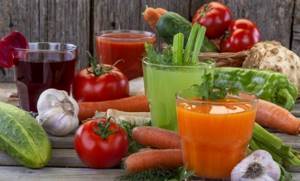
First of all, you need to remove the irritating effects of hydrochloric acid in the stomach. To do this, you should remove foods that have this effect from your diet:
- Spices;
- Various spices;
- Any fried food;
- Strong meat broths;
- Rough food;
- Raw coarsely chopped vegetables;
- Berries with small seeds.
Avoid alcohol and carbonated sweet drinks.
Boiled food is best; using a slow cooker is acceptable.
Do not overeat, eat little by little, but often, preferably 6-7 times a day - this is the basic principle of proper nutrition.
Do not eat cold or highly heated food.
Dark color of stool
Blood from stomach ulcers also affects the color of the stool. The onset of a peptic ulcer may be indicated by a darkish tint of stool and its unusual viscous consistency. In such cases, it is important to promptly seek medical help. If there is bleeding in the stomach, the stool will gradually turn from light yellow, brown to black. Changes in the color and consistency of stool occur due to a chemical reaction between gastric juice and hemoglobin in the intestines. Sometimes there may be blood clots in the stool.
Features of the diet in the acute phase
During the period of severe pain and the acute phase of the disease, including in the presence of complications, frequent split meals are necessary with the complete exclusion of any food that will, at least slightly, irritate the digestive tract. There should not be a long period of fasting during an ulcer - the feeling of hunger in combination with the natural production of hydrochloric acid negatively affects the walls of the stomach.
The following diet for one to two weeks during exacerbation of the pathology will be considered optimal:
- eating 6-7 times a day;
- portions are small;
- complete exclusion of any fried, smoked, pickled, sweet, fatty foods;
- food is served in crushed (puree) or liquid form, at moderate temperature.
The benefits of fish when gastritis and stomach ulcers
This seafood product contains protein that is easily digestible. You can use fish for gastritis and ulcers, because it is very useful and contains a number of microelements necessary for a sick body that needs reproduction. After all, protein components help restore the walls of the stomach suffering from gastrointestinal disorders. Fish contains Omega-3, an acid that removes harmful cholesterol, which contributes to the good condition of the whole body.

Pike perch, horse mackerel, and carp are fish that contain little fat (no more than 8%). The substances present carry out regeneration processes in the body. The freshwater species contains fat-soluble vitamins that help resist infection. Red fish is 95% digestible in the human body. To protect the diseased organ from irritation, you need to consult your doctor about which varieties are appropriate in your case.
Therapeutic nutrition for peptic ulcer disease
If the patient does not eat enough of the portion, its volume should not be increased. It is considered acceptable to increase the number of meals up to 7-8 times.
Recommended menu for acute illness
| Eating | Dishes |
| Breakfast | A couple of soft-boiled eggs / omelet / any milk porridge (semolina, pearl barley, rice, vermicelli). Lightly brewed green leaf tea. Cottage cheese. 1 teaspoon honey |
| Lunch | Fruit puree with a little milk (banana, peach, apricot) |
| Dinner | Vegetable or potato puree soup with croutons. Boiled chicken or fish fillet / steam cutlets. Garnish with rice or mashed potatoes. Salad of boiled vegetables (carrots and beets). Compote |
| Afternoon snack | Cottage cheese casserole with raisins, strawberries / Baked apple or pear with honey. Chamomile or rosehip decoction |
| Dinner | Boneless chicken fillet or dietary fish / soup / cottage cheese casserole |
| Snack before bed | A glass of warm milk with honey or kefir |
Following this kind of diet after 7-8 days leads to a significant improvement in a person’s well-being - pain in the epigastric region is eliminated, heartburn and nausea are less bothersome, and appetite improves. At this time, it is necessary to adjust the dosage and combination of medications and update the menu.
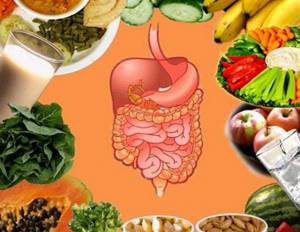
Menu for a week with a history of ulcers
After one or two weeks of exacerbation, a diet for the following months is determined. It is less harsh, allowing lean pork and beef, weak black tea, and some cereals. Restrictions on the intake of alcohol, coffee, fatty meats and fish, marinades, smoked meats, pickles, baked goods, and carbonated drinks are still relevant.
| Day of the week | Breakfast | Lunch | Dinner | Afternoon snack | Dinner | Second dinner |
| Monday | Milk rice porridge. A couple of soft-boiled eggs. Weak black tea with milk and sugar | Low-fat cottage cheese with sour cream, peach and apricot | Beetroot soup. Boiled vegetables (carrots, potatoes, beets) with cod in white sauce. Compote | Kissel. Cracker | Chicken meatballs. Baked potato. Tea with cracker | Milk. Honey |
| Tuesday | Vermicelli milk soup. Rose hip decoction | Carrot salad | Puree soup with vegetables. Baked chicken with mashed potatoes on the side. Compote | Fruit or berry puree with a glass of water | Pollock baked in foil. Vegetable stew. Green tea | Crackers. Yogurt |
| Wednesday | Semolina. Omelette. Milk/green tea | Apple casserole. Green tea or glass of water | Meatball soup. Baked pike perch with a side dish of buckwheat porridge. Kissel | Rusks or crackers with milk | Casserole with vegetables and chicken. Compote | Milk |
| Thursday | Lazy cottage cheese dumplings or low-fat cottage cheese with sour cream, honey or sugar. Herbal decoction | Baked apple/pear with honey. Tea | Cream soup. Boiled fish with vermicelli in sauce. Kissel | A soft-boiled egg and a glass of milk or carrot juice | Baked cod. Vegetable puree (zucchini, pumpkin). Bread. Compote | Kefir |
| Friday | Cottage cheese with sour cream, sugar and honey. Chamomile decoction | Sweet curd casserole. Green tea | Vegetable soup. Steamed beef meatballs with pasta and sauce. Kissel | Banana. Kefir | Boiled lean beef with mashed potatoes. Green tea | Milk. Honey |
| Saturday | Scrambled eggs. Crackers with butter. Green or black tea with milk | Fruit puree with cottage cheese and sour cream. Rose hip decoction | Pearl barley soup. Steamed chicken cutlets with cauliflower on the side. Compote | Curd berry casserole. Rosehip or chamomile decoction | Beet salad. Fish meatballs with buckwheat porridge. Kissel | A glass of milk with a spoon of honey |
| Sunday | Omelette. Weak tea with sugar and milk | Strawberry/strawberry/banana milk mousse or smoothie | Soup with dumplings. Beef Stroganoff. Vermicelli with white sauce. Compote | Jelly from berries or fruits. Rice or fruit pudding. Herbal decoction or jelly | Boiled beef in sauce with mashed potatoes. Weak black tea | Ryazhenka |
From the dishes proposed above, you can take any ingredients and cook something new at your own discretion, but taking into account the list of prohibited foods and cooking methods.
Products that are allowed to be consumed
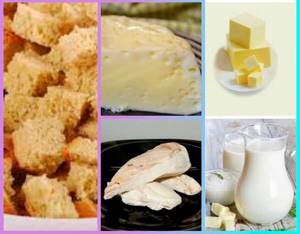
The choice of foods that you can safely eat is quite varied and nutritious.
- These include white bread, although it is better to dry it slightly before eating, homemade crackers;
- Of the soups, dairy, chicken, vegetarian, and cereal are allowed to be on the menu;
- Soft-boiled eggs (you can have an omelet, but only steam);
- low-fat dairy products;
- Boiled fish is allowed;
- Eating berries and cereals, pasta is allowed;
- vegetable and butter;
- jelly-like desserts, low-fat milk cream;
- cottage cheese and low fat cheese;
- weak rosehip infusion;
- honey, broccoli.
Nutrition for a bleeding ulcer
For ulcer bleeding, a specialized diet is used. If indicated, the patient may receive parenteral nutrition until bleeding stops. After its cancellation, you are allowed to take 200 ml of liquid cold food per day. This can be milk, jelly, jelly, cream, after a while they add sour cream and raw eggs, slimy soups. As a result, the patient is transferred to Table No. 1A with expansion to the Table No. 1 option.
To combat anemia, a diet with a high protein content (140-150 g) is prescribed, while fats are somewhat limited (60-70 g). It is necessary to enrich the diet with iron, cobalt, copper, manganese, cyanocobalamin, so it is advisable to introduce dishes with liver and yeast. If you are feeling satisfactorily, after 1.5 months, unchopped food with the addition of fresh vegetables and fruits is allowed. Plums, apples and peaches can also be eaten ungrated.
Is it possible to eat herring for gastritis and ulcers?
It is impossible to say unequivocally about the salted product, since the restrictions are selected by the doctor and each patient individually. It all depends on the form of the disease, the patient’s condition, and the level of acidity. For this reason, it is difficult to say for sure whether salted fish can be included in the diet for gastritis. But we can definitely say that even when restoring a diseased organ, too salty a product is prohibited.
If the fish is lightly salted, then during remission you can eat in small portions. The main thing is to prepare it correctly in order to improve the secretion of gastric juice and increase appetite, especially when there is low acidity.
You can buy such a product on the market or prepare it yourself. To do this, you need to soak it in milk for 6 hours in advance to remove excess salt. Any consumption of herring is prohibited if the acidity is high.
With erosive gastritis, you can serve fish, but the main thing is that it is boneless. Otherwise, it can injure the already affected stomach. In this case, even lightly salted herring is prohibited. But, it can be boiled if you buy it fresh, unsalted and cook it with a small amount of seasonings.
What nutrition is indicated when the process subsides and recovers?
This is a moderately gentle, physiologically complete nutrition within the limits of Table No. 1. It must be followed for a long time (up to six months), since peptic ulcer disease requires long-term dietary nutrition. It is also necessary to carry out anti-relapse treatment in parallel.
The absence of strong irritants in food at any stage of the disease (meat, mushroom broth, fish soup, strong tea, fried foods, coffee, carbonated drinks, marinades, mustard, alcohol) creates conditions for successful treatment and a long disease-free period. A stepwise expansion of the diet prepares the gastrointestinal tract for the transition to a common table, in which it is still worth limiting too hot, spicy, very hot dishes and alcohol, and maintaining regular food intake.
If the patient has a peptic ulcer and concomitant pancreatitis, then the diet is almost the same, but the amount of protein consumed increases to 140-160 g, since the essential amino acids of proteins are necessary to prevent the negative effects of the enzyme trypsin. The amount of fat must be reduced to the lower limit (80 g), including eliminating high-fat dairy products.
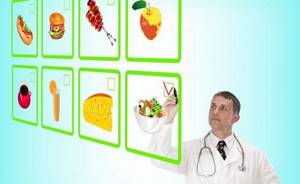
Usually, if patients feel well, it becomes difficult for patients to follow Diet No. 1 for such a long time and the period of stay on it is reduced to 2-3 months. The diet is expanded, non-purified food is introduced, and raw vegetables and fruits are added. These include sweet plums, peaches, nectarines, apples, and vegetables - tomatoes. In the future, when carrying out anti-relapse treatment in the autumn-spring period, you should again switch to gentle nutrition for 2-4 weeks (first Table No. 1B, and then No. 1).
There is no need to do anything to lose weight if you have an ulcer. First of all, because during an exacerbation the patient’s appetite worsens, he vomits after eating, and he is afraid to eat normally. In addition, the prescribed therapeutic nutrition itself promotes weight loss, since the list of permitted foods is very limited (especially Tables 1A and 1B, they have a reduced calorie content) and frying foods in oil is excluded for a long period.
Sweets and other simple carbohydrates are limited because they increase the excitability of the nervous system. If you exclude smoked foods, flour, fatty foods, and alcohol from your diet, then the issue of weight loss will disappear. It is enough to follow the recommendations regarding nutrition, and it will decrease.
It is absolutely forbidden to fast if you have gastrointestinal diseases. Adding spices (ginger and cardamom) to drinks, which speed up metabolism, is also contraindicated. Any spices are prohibited as they provoke the release of digestive enzymes. Also, the patient should not refuse white bread in favor of black bread, which is always recommended during diets. As you can see, the desire to lose weight can cause an exacerbation.
Diet for gastric ulcer during unstable remission:
Avoid as much as possible foods that increase secretion (rich broths, spicy, pickled, smoked and fried foods, alcoholic drinks, coffee, tea, carbonated drinks).
Avoid irritating foods (citrus juices and sour fruits, cranberries, tomatoes, onions, peppers, garlic, turnips, radishes, coffee, tea, ginger, chocolate, alcohol) and foods that increase gas formation.
Reduce the amount of food consumed - a fist-sized portion at a time.
Frequent meals (5-6 times a day). Last dose no later than 3 hours before bedtime.
Eat foods warm, since cold foods take a long time to digest, and hot foods irritate the mucous membranes.
Increase protein intake and reduce the amount of fat (fatty pork, goose, duck, lamb, cream, butter, cream cakes).
The main methods of cooking are boiling, stewing, and baking in the oven, starting from the third week of exacerbation.
Do not mix products that do not combine (proteins and carbohydrates) to avoid rotting and fermentation.
Include bananas, wild strawberries, cherries, blueberries, potato juice, oat broth, and sweet apples in your diet.
During stable remission, nutrition is close to that of a healthy patient, but with restrictions on spicy foods.
By following these dietary recommendations, eliminating smoking, which increases the risk of relapse, and drinking alcohol, you can achieve a long-term (several years) relapse-free course of the disease. Patients suffering from peptic ulcers should avoid taking non-steroidal anti-inflammatory drugs.
Features of the therapeutic diet “Table No. 1B”
Gastroenterologists, along with prescribed therapy, always recommend a therapeutic diet specifically for patients with peptic ulcers of the stomach and duodenum, gastroduodenitis, and gastritis. It is called “Table No. 1B”. The essence of gentle nutrition according to the principle of such a diet is as follows:
- in the exclusion of irritating products that negatively affect the mucous membrane of the organ and enhance the work of the gastric glands responsible for the secretion of acids;
- in reducing the consumption of carbohydrate foods - the amount of daily carbohydrate intake should correspond to 300 g;
- in reducing salt consumption - taking into account its addition to all dishes, the total value of sodium chloride should not exceed 3 g;
- proteins and fats remain unchanged, as for a healthy person - 100 g of each organic compound per day;
- the amount of total mass of products per day is 2500-3000 g;
- frequency of main meals – 6 times, small portions;
- the energy indicator of the daily menu is 3000 kcal;
- preference is given to dairy products and dishes prepared with cow's milk;
- heat treatment is allowed only by steam, cooking, stewing;
- the maximum temperature for eating is 60 degrees, the permissible minimum temperature is not lower than 20 degrees;
- At night, the patient should drink cow's milk;
- broths from meat and fish are not used in preparing first courses;
- products containing plant fiber are completely excluded from the diet;
- all main dishes should be rare or semi-liquid, preference is given to food with a soft consistency in the form of puree;
- the minimum course of observing a gentle diet according to diet 1B is 14 days, optimally 30 days; Depending on the severity of the pathology, in some cases you will need to “sit” on such a diet for 3 to 12 months.
People who adhered to Table No. 1B noted that unpleasant symptoms (nausea, pain, heartburn, belching, etc.) subsided by the end of the first week of the diet. Indeed, therapeutic nutrition can bring the digestive tract into stable functioning and help alleviate the patient’s condition. Thus, many, delighted with the first positive results, prematurely draw conclusions about their recovery and return to their previous diet. After which, in the near future, an acute relapse of the disease occurs again.
The main goal of this nutritional technique is to help the stomach get out of the inflammatory state, to create favorable conditions in its cavity for the regeneration of ulcerated tissues of the mucous membrane. Ulcerative lesions do not heal quickly; their complete epithelization may take some time - from 1 month to 1 year. The speed of organ recovery depends on strict control over the diet. It is also worth considering the clinical severity of the disease and the individual characteristics of the patient.
Approximate menu for the day according to diet No. 1B
| Business hours | Meals | Recommended menu |
| 7-00 | ————- | A cup of cow's milk. |
| 7-40 | 1 breakfast | 100 g cottage cheese soufflé; 200 ml of liquid oat porridge in milk with 10 g of sugar and a piece of butter; a glass of weak tea with 1 biscuit diluted with milk. |
| 10-00 | 2 breakfast | A cup of cow's milk with a sweet cracker. |
| 12-40 | dinner | Crushed pearl barley soup with milk (300 ml) with 1 tsp. a spoonful of sugar and a piece of butter; mashed potatoes (200 g), diluted with 1/4 cup milk; steamed chicken ball topped with sour cream; thick plum jelly. |
| 15-30 | afternoon tea | Milk pudding (120 g). |
| 18-30 | dinner | Fish casserole (120 g); milk pumpkin soufflé sprinkled with honey (180 g), a cup of green tea with crackers. |
| 21-00 | ————- | A cup of cow's milk. |
